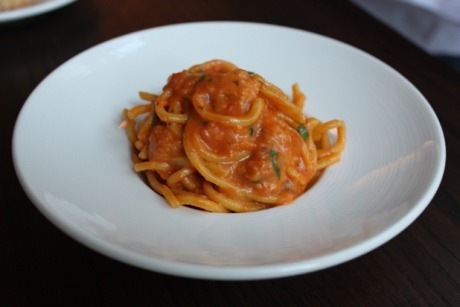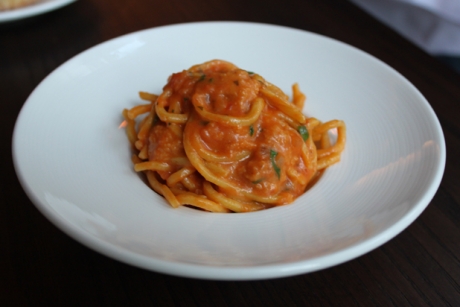Is Italy Losing Its Reputation For Great Food?
We may receive a commission on purchases made from links.
Just to allay any fears at the outset, the answer to the question above is a resounding no. Having eaten throughout Italy for the past four decades, I've seen only minor alterations to its gastronomy, several quite positive. For one thing, the Italians now venture out to restaurants more often than they used to and are more demanding about what they eat there. They now know more about wines beyond their region and happily search out good artisanal products.
On the other hand, Italy has become such a victim of its own success with tourism that there has been a gradual slide in quality in favor of quantity at many restaurants. Careful cooking has given way to mass feeding, especially during the tourist season — which for overrun cities like Rome, Venice, and Florence means April first straight through to November. When a restaurant's clientele is principally touristic, authenticity suffers, and some Italian restaurateurs might end up believing that his customers wouldn't know a good risotto, for instance, if it hit them in the face. Thus, on a recent trip to Siena, at a restaurant recommended by an American food magazine, I was served not arborio but Uncle Ben's converted rice, which the restaurant owner proudly displayed to me, as if to say, "I know you americani prefer this stuff."
On the other hand, I continue to eat spectacularly well in Italy, especially outside the tourist centers; I continue to swoon when served a plate of agnolotti del plin graced with butter and sage at a ristorante in Turin, or a massive bistecca alla fiorentina in Florence, or a sensational spaghetti all'amatriciana in Rome. The tempo of a meal in Italy, the simplicity of the cooking, and the much improved wine lists make a culinary journey to just about any region a pleasure.
A call by Chef Paul Bartolotta from his namesake restaurant in Las Vegas will bring him fresh mullet, branzino, and langoustines from Europe the next morning. At Spiaggia in Chicago, Tony Mantuano can import the finest bottarga, an array of artisanal cheeses, and wines only a handful of restaurateurs in Italy might obtain. And consider Eataly, New York's offshoot of the Turin original, where entire aisles are stocked with scores of imported pastas, charcuterie, coffees, and chocolates.
Still, having good ingredients is not the same as making a good cuisine. I will always believe it takes years of practice and hard work to reproduce what generations of Italian cooks have refined. But today we have American chefs like Bartolotta, Mantuano, Mario Batali, Michael White, and so many others, who have put in their grunt time in Italian kitchens, and whose passion becomes manifest in what they serve on their menus — menus which might specialize in a single region, but are more often an amalgam of regional dishes filtered through an American sensibility.
And this has led to an interesting conundrum: How is it that some of the best Italian food in the world is now being made in the U.S.? Why is it that Italian restaurants like Valentino in Santa Monica, Quince in San Francisco, Tony's in Houston, and dozens in New York City, including Del Posto, SD26, Caravaggio, Marea, and Felidia, among many others, are as good as the best in Italy? As I contend in my new book, How Italian Food Conquered the World (Palgrave Macmillan, 2011), the cooking of Italy has indeed become the most widely accepted and most fashionable cuisine in the world — but in fact the best new Italian restaurants in cities from London and Berlin to Tokyo and Shanghai copy those U.S.-based restaurants I've just named more often than they do some darling little trattoria in Verona or Taormina.
In response to this assertion, Italian restaurateurs usually prefer to shrug rather than fight, simply because they are perfectly content, if not complacent, to continue cooking and serving the food of their region — which, they would contend, has been perfected over centuries. Historically, this isn't really true, for most of what we know of as Italian regional cooking took on its own identity only after Italians themselves had the means to buy and cook good food, beginning — slowly — in the latter part of the 19th century. Even then, the poverty-stricken southern immigrants who came to America brought with them only the vaguest notions of the recipes that would evolve into full-blown Italian-American food in the 20th century.

